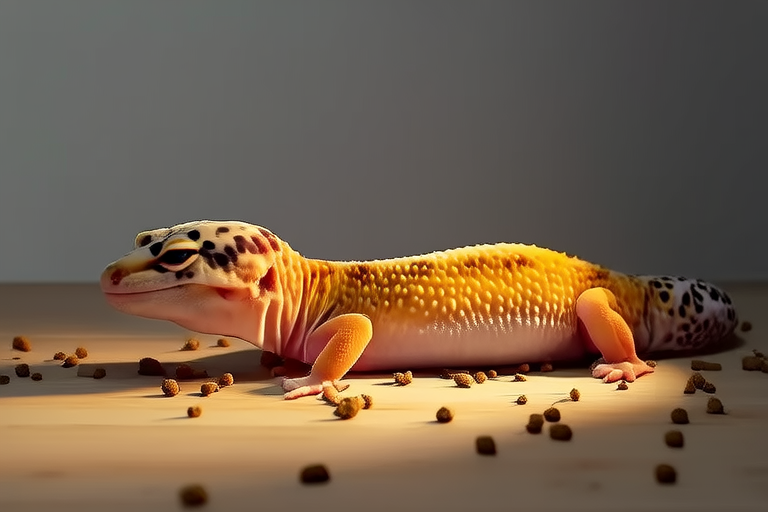The Ultimate Leopard Gecko Care Guide for New Pet Owners
Leopard geckos are one of the most popular reptile pets, and it’s easy to see why. These adorable, docile creatures are relatively low-maintenance compared to other exotic pets, making them an excellent choice for first-time reptile owners. However, providing proper care is essential to ensure your leopard gecko thrives in its new home. In this comprehensive guide, we’ll cover everything you need to know about habitat setup, diet and nutrition, handling tips, health monitoring, and general care advice.
Setting Up the Perfect Habitat
Creating a safe and enriching environment is the foundation of good leopard gecko care. Here’s how to set up their habitat properly:
Enclosure Size and Type
A 20-gallon tank is the minimum size recommended for one adult leopard gecko. If you plan to house more than one gecko, ensure each additional gecko has at least 10 extra gallons of space. Glass terrariums with a secure mesh lid are ideal because they provide ventilation while preventing escape.
Temperature and Lighting
Leopard geckos are ectothermic, meaning they rely on external heat sources to regulate their body temperature. The enclosure should have a temperature gradient:
- Warm Side: 88-92°F (31-33°C)
- Cool Side: 75-80°F (24-27°C)
Use an under-tank heating pad on one side of the enclosure to create this gradient. Avoid using heat rocks, as they can cause burns. Leopard geckos do not require UVB lighting like some other reptiles, but a consistent day-night cycle is important. Use a simple light timer to mimic 12 hours of daylight and 12 hours of darkness.
Substrate
Choosing the right substrate is crucial to prevent impaction, a condition where ingested substrate blocks the digestive tract. Safe options include:
- Reptile carpet
- Paper towels
- Flat stones or tiles
Avoid loose substrates like sand or wood chips, especially for younger geckos, as these pose a higher risk of impaction.
Hides and Decorations
Leopard geckos need multiple hides to feel secure—one on the warm side, one on the cool side, and a humid hide to aid shedding. You can purchase pre-made hides or create DIY versions using plastic containers with entry holes. Add climbing branches, caves, and other decorations to enrich their environment, but ensure there’s enough open space for movement.
Diet and Nutrition
Feeding your leopard gecko correctly is vital for its health and longevity. Here’s what you need to know:
What Do Leopard Geckos Eat?
Leopard geckos are insectivores, meaning their diet consists entirely of insects. Popular feeder insects include:
- Crickets
- Mealworms
- Dubia roaches
- Waxworms (as occasional treats)
Ensure all insects are gut-loaded (fed nutritious food) before offering them to your gecko. This ensures your pet receives maximum nutritional benefits.
Feeding Schedule
Juvenile leopard geckos should be fed daily, while adults can be fed every other day. Offer as many insects as your gecko will eat within 10-15 minutes. Remove uneaten insects from the enclosure to prevent stress or injury to your gecko.
Supplements
To maintain optimal health, dust feeder insects with calcium powder (without phosphorus) at every feeding. Once or twice a week, use a multivitamin supplement containing vitamin D3. Proper supplementation helps prevent metabolic bone disease, a common issue in reptiles.
Handling Tips
Handling your leopard gecko builds trust and strengthens your bond, but it must be done carefully:
- Wait until your gecko is comfortable in its new environment before handling it. This usually takes 1-2 weeks.
- Approach slowly and gently scoop up your gecko with both hands, supporting its entire body.
- Avoid grabbing or restraining it forcefully, as this can cause stress.
- Limit handling sessions to 10-15 minutes to prevent exhaustion.
Remember, some geckos may never enjoy being handled, and that’s okay! Respect their personality and comfort level.
Health Monitoring
Regularly observing your leopard gecko for signs of illness or distress is key to catching problems early. Here are some common issues to watch for:
Signs of a Healthy Gecko
- Bright, alert eyes
- Active during nighttime hours
- Healthy appetite
- Smooth, unblemished skin
- Regular bowel movements
Common Illnesses and Symptoms
Some common health concerns include:
- Metabolic Bone Disease: Weak limbs, tremors, or difficulty moving. Caused by calcium deficiency.
- Impaction: Lethargy, constipation, or bloating. Often caused by improper substrate.
- Respiratory Infections: Wheezing, mucus around the mouth or nostrils, or labored breathing. Usually due to poor humidity levels.
- Shedding Problems: Retained shed on toes or tail. Provide a humid hide to assist with shedding.
If you notice any of these symptoms, consult a veterinarian experienced with reptiles immediately.
General Care Advice
Beyond the basics, here are some additional tips to keep your leopard gecko happy and healthy:
Maintain Proper Humidity
While leopard geckos don’t require high humidity, maintaining a range of 30-40% is ideal. Use a hygrometer to monitor levels and mist the humid hide occasionally if needed.
Clean the Enclosure Regularly
Spot clean daily by removing waste and uneaten food. Deep clean the entire enclosure once a month, disinfecting surfaces with reptile-safe cleaners.
Provide Fresh Water
Always keep a shallow water dish in the enclosure, changing the water daily to ensure cleanliness.
Be Patient and Observant
Every leopard gecko has a unique personality. Spend time observing your pet to learn its habits and preferences. Patience and attentiveness go a long way in building a strong relationship.
Conclusion
Owning a leopard gecko can be a rewarding experience filled with joy and discovery. By setting up a proper habitat, feeding a balanced diet, handling with care, and staying vigilant about health, you’ll give your new pet the best chance at a long, happy life. Remember, caring for a leopard gecko is a commitment, but the love and companionship they offer make it all worthwhile. Welcome to the wonderful world of leopard gecko ownership!
